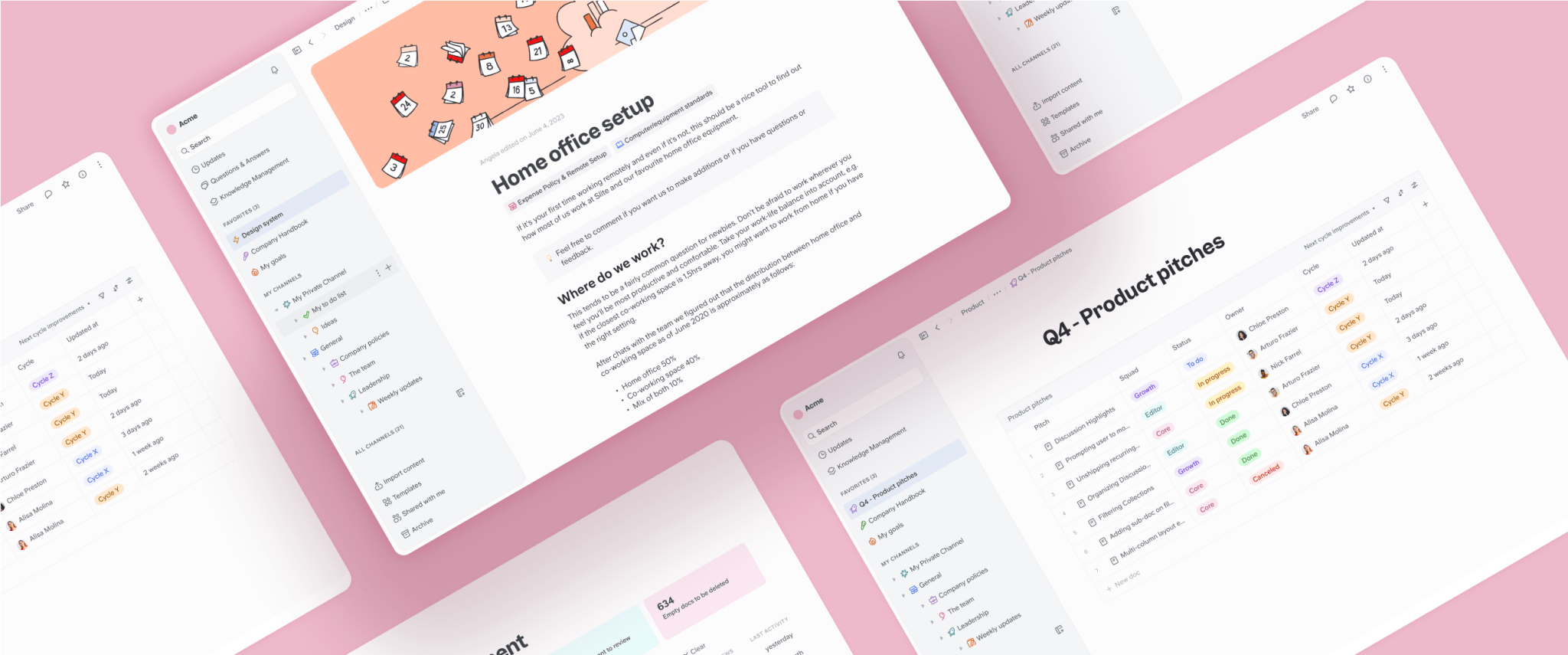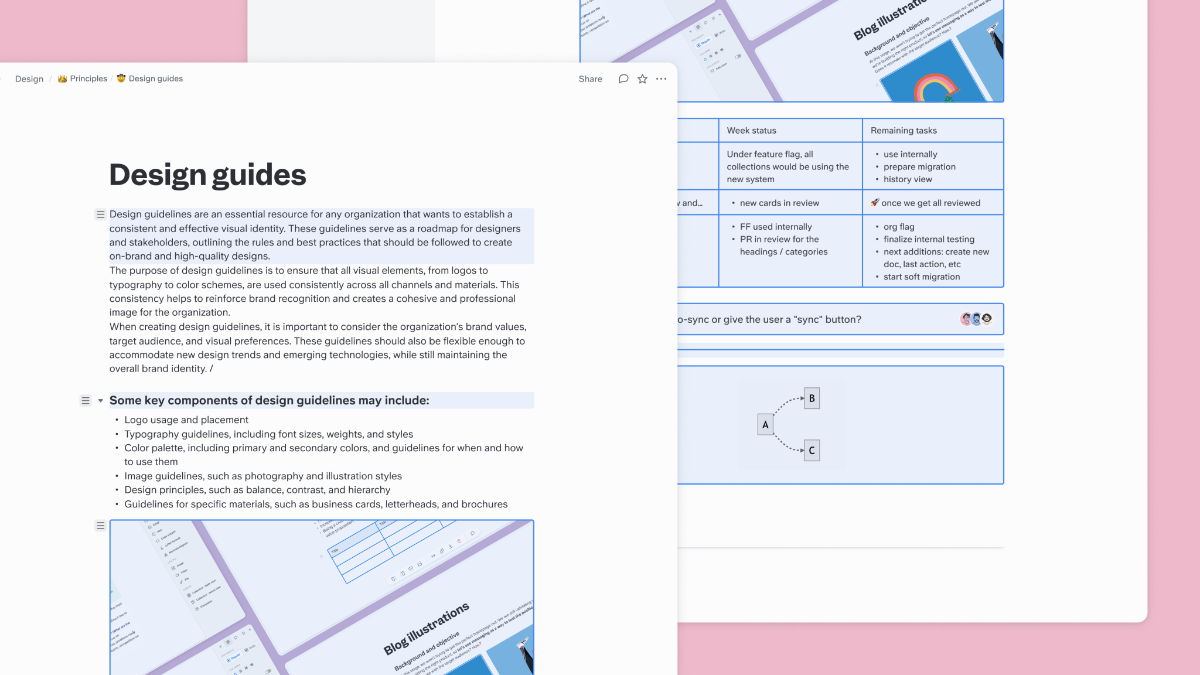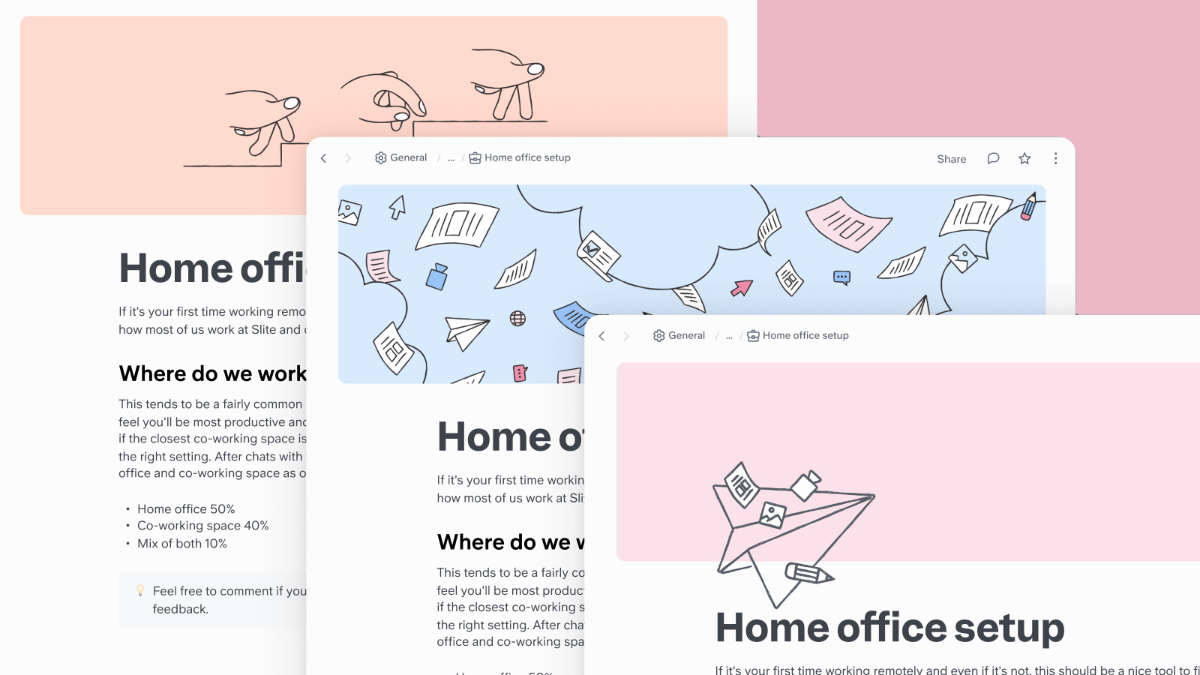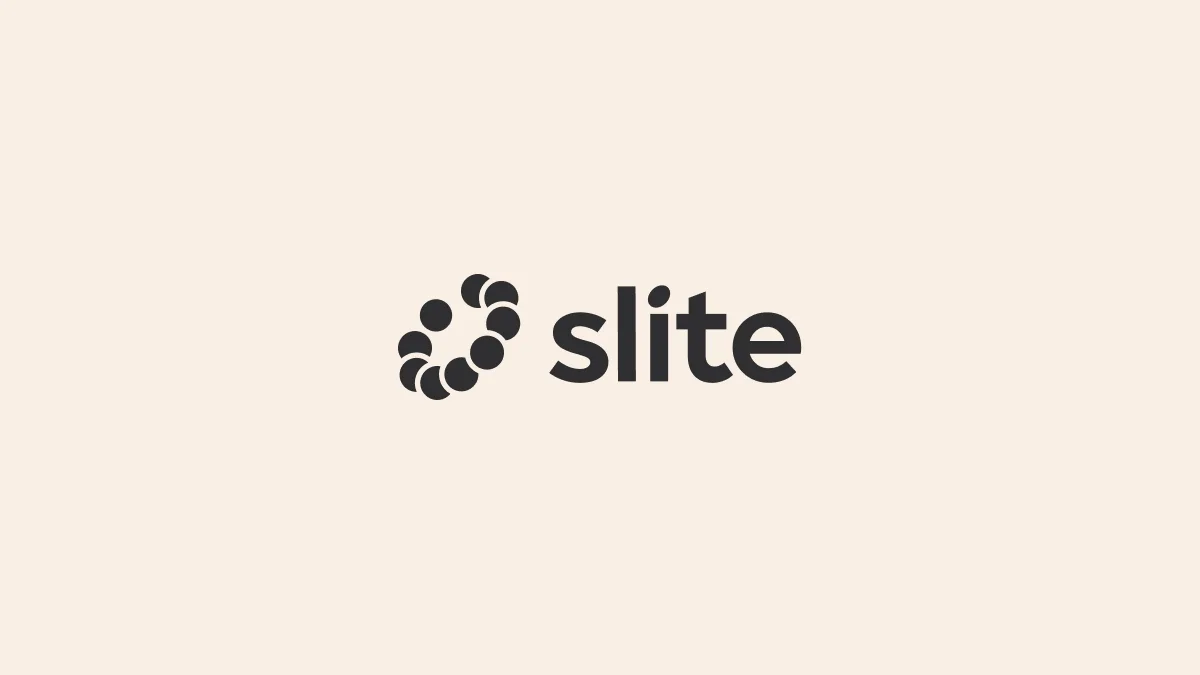Slite + Ask
Designing a smarter way to find knowledge
When I joined Slite, the product had a clear purpose: help teams document what they know. But as companies scaled, another pattern emerged—knowledge was growing faster than people could keep up with it. Everyone knew the answers existed somewhere, but finding them took time. We wanted to change that.
We started imagining a way to make company knowledge feel alive. What if, instead of searching through folders and pages, you could simply ask a question—and get an answer? That idea became Ask, Slite’s AI assistant.
We designed Ask to feel conversational, not mechanical. It understands natural language and surfaces the most relevant context, pulling from a team’s entire workspace. Each interaction was crafted to feel clear, confident, and quietly human. It wasn’t just about speed—it was about trust.
At the same time, we saw an opportunity to improve how teams created knowledge. I led a full redesign of the Slite editor, simplifying the writing flow, improving readability, and integrating AI features like smart suggestions and auto-structuring. The goal was simple: make writing and discovering knowledge equally effortless.



As Head of Design, I guided both product and marketing design teams. We worked fully remote, but we built a rhythm—design rituals, async reviews, and shared principles that kept creativity focused and connected.
The launch of Ask marked a turning point for Slite. It transformed the product from a documentation tool into one of the first truly AI-native collaboration platforms—one where knowledge wasn’t just stored, but understood.
It showed how design, when paired with intelligence, can bring a sense of calm to complexity. And it reminded us that the best tools don’t just help you work—they help you think.
